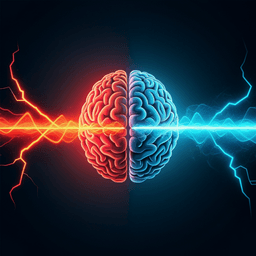
Cognitive Science
Brain-optimized deep neural network models of human visual areas learn non-hierarchical representations
G. St-yves, E. J. Allen, et al.
This study by Ghislain St-Yves and colleagues explores whether hierarchical representations are a must for predicting brain activity in the primate visual system. Surprisingly, they find that a single-branch deep neural network outperformed its multi-branch counterpart, challenging prevailing assumptions about brain-like DNN architectures. Discover how insights from human visual areas V1–V4 could reshape our understanding of neural representation!
~3 min • Beginner • English
Related Publications
Explore these studies to deepen your understanding of the subject.







